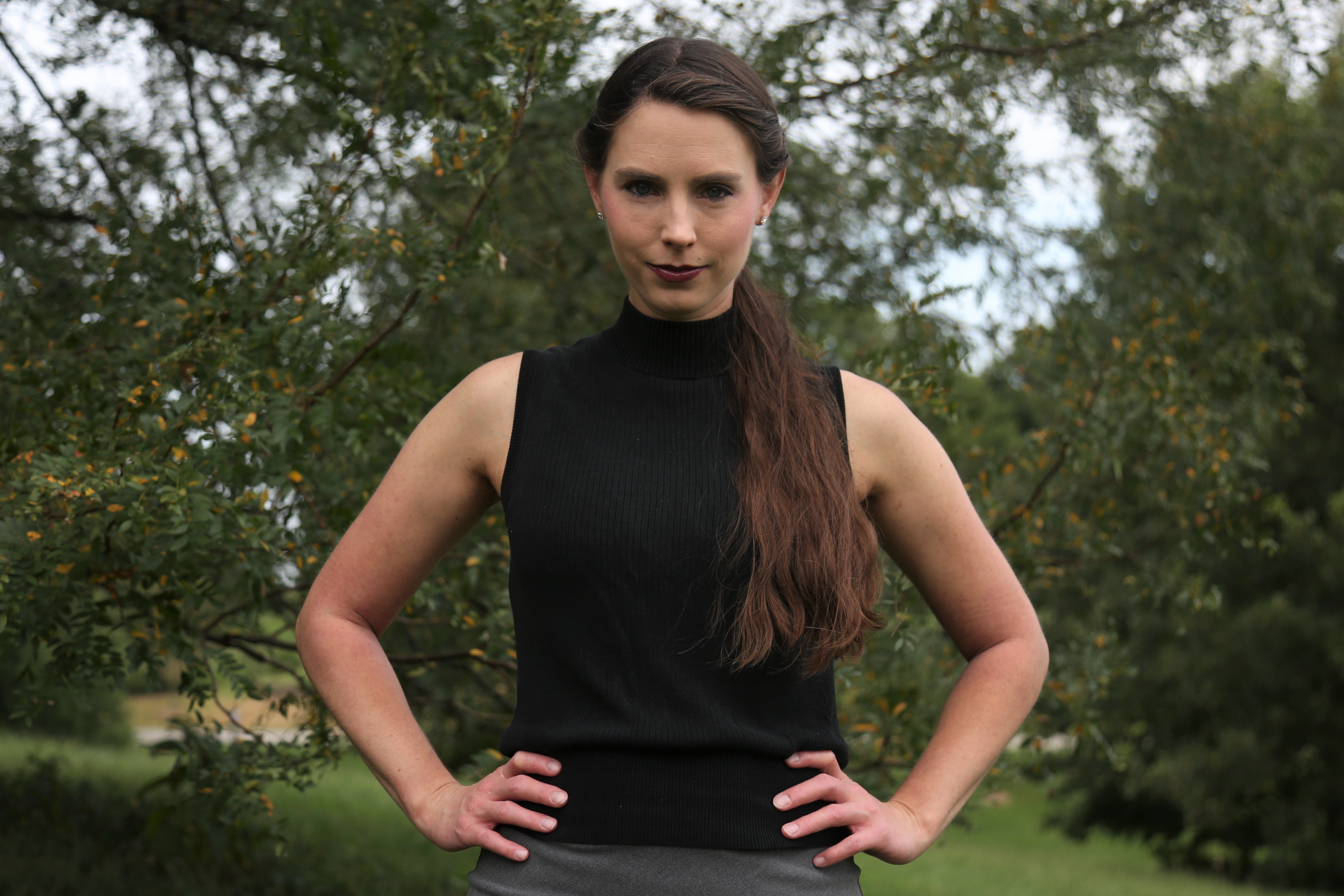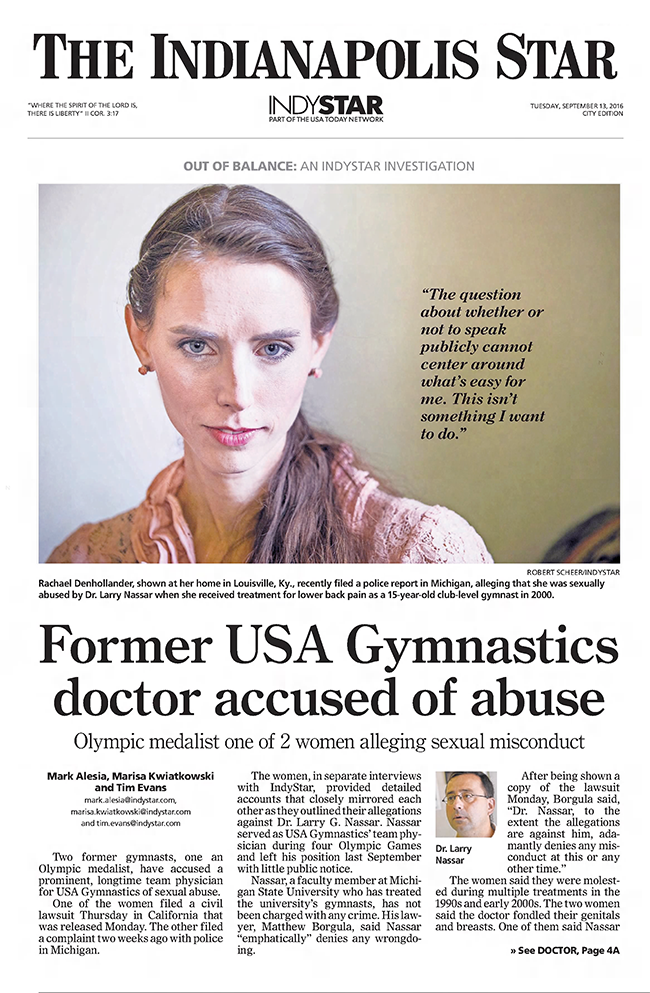Then, the paper got a third tip about Larry; a former Olympian was planning to file a lawsuit against him.
(We now know that woman is Jaime Dantzscher. She was on the U.S. Olympic gymnastics team in 2000. She says Larry abused her as early as the mid 1990s).
So by the end of August 2016, the IndyStar had three different women from three different parts of the country, all with similar stories about the same doctor.
“To me, that’s when, that was the moment when I thought, ‘oh my God, we might really be onto something,’” says Mark.
Mark let Rachael know she wasn’t the only one, that they were getting more tips about Larry.
But Rachael was different. She was the only woman willing to use her name on the record.
After talking to Mark at the paper, Rachael found out it wasn’t too late for her to call the police. So before IndyStar published its story, she called a non-emergency number in East Lansing, Michigan and eventually got routed to police at Michigan State University.
Rachael knew Larry still worked at MSU. She worried police there might know him, and protect him. But luckily for Rachael, Detective Andrea Munford got her call.
The thing you need to know about Detective Munford is that she’s got a motto: Start by believing.
It may sound like a cliché, but Munford makes it her mission to teach other police officers how trauma works and how to treat survivors in a way that doesn’t accidentally re-traumatize them.
She’s been trained in the theory that sometimes trauma can damage a rape victim’s memory and they might act in ways you wouldn’t expect — like laughing during an interview, or, in Rachael’s case, not feel like they can even report their assault for 16 years.
On the phone, Detective Munford asked Rachael, “May I have this doctor’s name?”
“Doctor Larry Nassar,” Rachael said.
Munford stopped, realizing there had been a complaint about that guy before.
She finished her conversation with Rachael, and went across the hall to Val O’Brien’s office.
If you don’t remember, O’Brien’s the MSU detective you heard in the last episode. She’s the one who handled Amanda Thomashow’s sexual assault complaint against Larry in 2014.
O’Brien confirmed it’s the same guy.
“And so it was like, here we go, like what’s going to come forward and what are the chances of two complaints against that doctor?” says Munford.
So Detective Andrea Munford asked Larry to come into the station.
We got this tape through a public records request. Watch the full interview below:


